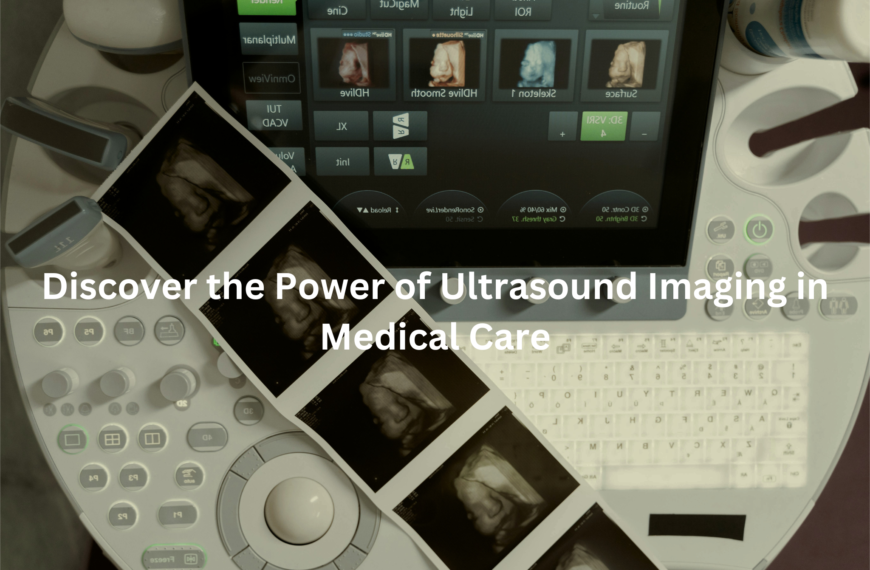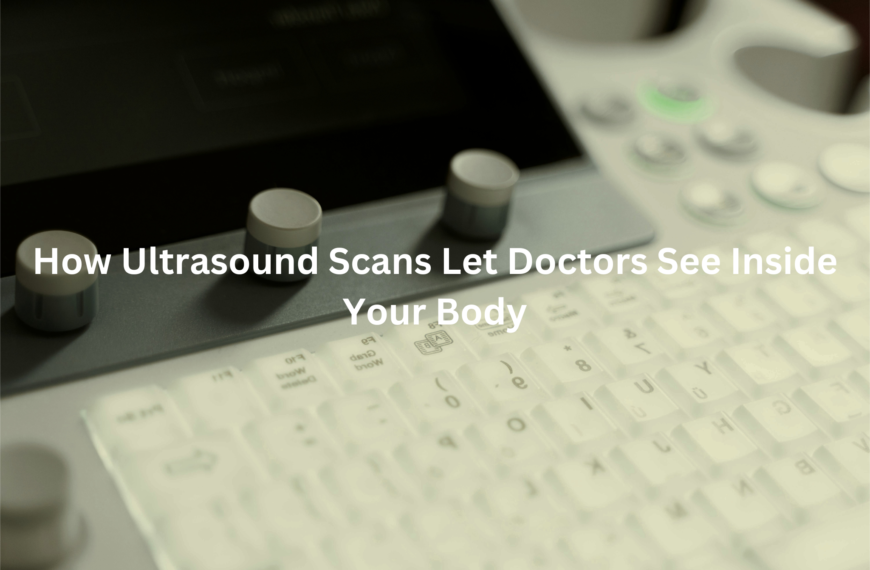Learn how PET scans provide valuable insights into metabolic activity and assist in diagnosing and treating conditions.
Positron Emission Tomography (PET) scans are an essential tool in modern medicine. They enable doctors to assess metabolic activity in organs and tissues, making it easier to diagnose conditions like cancer, heart disease, and neurological disorders.
By using a radiotracer that highlights areas with high metabolic activity, PET scans offer a clear picture of how the body functions at a cellular level, guiding treatment decisions and monitoring progress.
Key Takeaway
- Comprehensive Diagnostics: PET scans help diagnose a variety of conditions, including cancer, heart disease, and brain disorders, by providing detailed metabolic images.
- Treatment Monitoring: They are vital for assessing the effectiveness of treatments, tracking disease progression, and detecting recurrences, especially in cancer.
- Safety and Precision: PET scans provide high-quality imaging with low radiation exposure, ensuring accurate diagnosis while prioritising patient safety.
How PET Scans Work
Radiotracer Administration
A PET scan begins with injecting a radiotracer, usually fluorodeoxyglucose (FDG), into the patient’s bloodstream. This tracer highlights areas with higher metabolic activity, such as cancer cells, which consume more glucose than normal cells.
Key points:
- Cancer cells absorb more FDG.
- Identifies areas with abnormal metabolic activity.
- Crucial for detecting and diagnosing cancer.
Imaging Process
After the injection, the patient lies on a padded table that gradually moves into the PET scanner. The scanner picks up the gamma rays emitted as the radiotracer decays. These rays are used to create detailed images that highlight metabolic activity in organs.
Key points:
- Focuses on metabolic activity rather than anatomy.
- Identifies areas of high energy consumption.
- Essential for diagnosing various conditions.
Image Interpretation
Once the PET scan is complete, radiologists carefully review the images, which provide valuable insights into how organs are functioning. This is crucial for diagnosing conditions like cancer, heart disease, and brain disorders.
Key points:
- PET scans reveal changes in metabolism over time.
- Assist in treatment decisions and surgical planning.
- Aid in monitoring the progression of various conditions.
PET Scan Applications in Medicine
Oncology
PET scans are a vital tool in detecting cancer by highlighting areas with abnormal metabolic activity. They assist doctors in identifying cancer cells, determining its stage, and monitoring treatment progress, especially in lung, colorectal, and oesophageal cancers. (1)
Key benefits:
- Detects cancer early, often before symptoms appear.
- Identifies cancer in lymph nodes or other areas.
Cardiology
PET scans are vital in cardiology, evaluating heart function and blood flow. They play a key role in diagnosing coronary artery disease (CAD) and assessing heart attack risk. PET scans can identify areas of the heart lacking sufficient blood flow, which helps guide treatment decisions.
Key takeaways:
- Detects regions with reduced blood flow in the heart.
- Monitors heart function after a heart attack.
- Assists in deciding treatments like surgery or stents.
Neurology
PET scans play a vital role in diagnosing neurological conditions such as Alzheimer’s, epilepsy, and brain abnormalities. They can pinpoint areas of the brain with abnormal activity or metabolism, helping doctors confirm diagnoses and monitor disease progress.
Key insights:
- Identifies abnormal brain activity related to neurological disorders.
- Detects amyloid plaques, a hallmark of Alzheimer’s.
- Supports early diagnosis of neurodegenerative diseases.
Amyloid Imaging
PET scans are proving crucial in amyloid imaging, detecting amyloid plaques—protein clusters in the brain associated with Alzheimer’s disease. Identifying these plaques early allows for earlier treatment, potentially slowing the progression of the disease.
Key points:
- Detects amyloid plaques, a key sign of Alzheimer’s.
- Early detection enables faster treatment.
- May help slow disease progression.
PET-CT Imaging: Enhanced Accuracy
Image Fusion
PET-CT merges the metabolic imaging of PET with the anatomical precision of a CT scan. This fusion provides a clearer, more detailed view of the body, pinpointing metabolic activity in relation to its structures. By aligning both image sets, doctors can make more accurate diagnoses and develop improved treatment plans.
Key points:
- Combines PET’s metabolic imaging with CT’s anatomical precision.
- Provides a detailed view of metabolic activity within the body.
- Enhances diagnostic accuracy and treatment planning.
3D Imaging and Resolution
PET-CT scans deliver high-quality 3D images, enhancing both resolution and detail. This allows doctors to examine organs and tissues from various angles, providing a clearer and more comprehensive view, which supports more accurate assessments and treatment decisions.
Key points:
- PET-CT scans offer high-resolution 3D imagery.
- Multiple angles provide an in-depth view of organs and tissues.
- Enables precise assessments and treatment planning.
Safety Considerations and Radiation Exposure
Radiation Risks
PET scans, like all imaging methods, involve some radiation exposure from the radiotracers used. However, the radiation levels are generally low and not harmful to most patients. Healthcare professionals follow strict safety guidelines to reduce exposure, ensuring scans are only carried out when essential, particularly for vulnerable groups.
Key points:
- PET scans involve low radiation levels.
- Safety protocols reduce radiation exposure.
- Scans are performed only when necessary, especially for vulnerable groups.
Patient Selection
Patient safety is crucial, particularly for certain groups needing extra care. For example, pregnant or breastfeeding women may need to avoid PET scans due to potential risks to the baby. Additionally, patients who have allergic reactions to radiotracers need to be closely monitored.
Key points:
- Pregnant or breastfeeding women may need to avoid PET scans.
- Allergic reactions to radiotracers require close monitoring.
- A full medical history is taken prior to the scan to ensure safety.
PET Scans for Cancer Treatment and Monitoring
Monitoring Response to Therapy
PET scans are essential for monitoring the effectiveness of cancer treatments. After surgery or chemotherapy, doctors use PET scans to track tumour shrinkage or detect new growth. This helps them adjust treatment plans to ensure patients receive optimal care.
Key points:
- PET scans track treatment progress.
- Detect tumour shrinkage or new growth.
- Help doctors adjust treatment plans for better outcomes.
Cancer Recurrence Detection
PET scans play a crucial role in detecting cancer recurrence. Even after successful treatment, cancer can sometimes return, and PET scans offer high sensitivity to spot small traces of cancer. This ability to detect early signs ensures timely intervention, giving patients the best chance for effective treatment.
Key points:
- PET scans detect cancer recurrence.
- Sensitive enough to spot small traces of cancer.
- Crucial for early detection and effective treatment.
PET Scans for Heart Disease Diagnosis
Myocardial Blood Flow
For individuals with coronary artery disease (CAD) or other heart conditions, PET scans are invaluable in assessing myocardial blood flow. These scans reveal how much blood is reaching the heart muscle, allowing doctors to gauge the disease’s severity. If any areas lack sufficient oxygen-rich blood, it helps guide treatment plans, such as angioplasty or surgery. (2)
Key points:
- PET scans assess myocardial blood flow.
- Indicate blood supply to the heart muscle.
- Help plan interventions like angioplasty or surgery.
Post-Surgery Monitoring
After procedures like coronary artery bypass graft (CABG) surgery, PET scans are essential for monitoring the heart’s recovery. By assessing blood flow to the heart muscle, PET scans help doctors check if the treatment’s been successful and that the heart is healing properly.
Key points:
- PET scans monitor heart recovery post-CABG.
- Evaluate blood flow to ensure healing.
- Confirm treatment success and recovery progress.
Post-Scan Considerations
Scanning Times
A typical PET scan usually lasts between 30 minutes to an hour, depending on the area being examined. After the scan, patients will need to wait while the images are processed, which can take an additional 30 minutes.
Key points:
- Scan duration: 30 minutes to 1 hour.
- Processing time: Around 30 minutes.
- Patients need to wait after the scan for image processing.
Follow-up Testing
If a PET scan reveals something unusual, additional tests may be needed to confirm or rule out a diagnosis. These extra procedures ensure accuracy and help guide treatment decisions. It’s important for patients to attend follow-up appointments to monitor progress and adjust treatments if necessary.
Key points:
- Extra imaging may be needed for confirmation.
- Follow-up appointments are vital for tracking progress.
- Treatment adjustments may be required based on results.
The Future of PET Imaging
Technological Advances
PET imaging is constantly advancing, with upgrades in scanner technology boosting both speed and image quality. New high-resolution detectors and quicker scanning processes allow doctors to identify diseases earlier and with more precision, ultimately leading to improved treatment outcomes for patients.
Key points:
- Improved resolution for sharper images.
- Faster scans for quicker results.
- Early detection enables better treatment options.
Molecular Imaging
As research into PET scans progresses, their capabilities in molecular imaging are expanding. Soon, these scans could identify specific molecules or genetic markers related to diseases, giving a more detailed understanding of how diseases develop and how they can be treated.
Key points:
- Ability to detect genetic markers and specific molecules.
- Provides a clearer view of disease progression.
- Improves treatment strategies for more targeted care.
Conlusion
In the future, PET scans are set to become more advanced and widely accessible. As technology continues to improve, their role in diagnosing and treating a range of diseases will grow even more critical.
Both patients and doctors hope that these scans will provide clearer insights, enabling better treatment decisions and ultimately improving patient outcomes. With ongoing innovation, PET scans are poised to become an even more invaluable tool in healthcare.
FAQ
What is a PET scan and how does it work?
A PET scan, or positron emission tomography, is an imaging technique used to look inside the body. It helps doctors detect areas of abnormal metabolic activity, like cancer cells or heart disease. During the scan, a radioactive tracer is injected into the body, which highlights areas where the body uses more energy, such as in tumours or heart muscle.
What is the role of PET scans in detecting cancer?
PET scans are crucial for detecting cancer, including lung cancer, colorectal cancer, and oesophageal cancer. The scan images show areas of high metabolic activity where cancer cells absorb more glucose, revealing the location and spread of the cancer. PET imaging is also useful for detecting cancer recurrence and monitoring the response to therapy.
How can PET scans help in heart disease diagnosis?
In diagnosing coronary artery disease, PET scans can assess myocardial blood flow and identify areas of the heart muscle not receiving enough blood. For patients who’ve had a heart attack or coronary artery bypass graft surgery, PET scans can monitor recovery and evaluate heart function, helping guide treatment decisions.
Can a PET scan be used for brain disorders?
Yes, PET scans can detect brain abnormalities and assess brain function by measuring brain metabolism and brain activity. They help in diagnosing brain disorders, such as Alzheimer’s disease and epilepsy, by identifying areas with abnormal metabolic activity. PET scans also play a key role in amyloid imaging to detect early signs of Alzheimer’s.
References
- https://www.healthdirect.gov.au/pet-scan
- https://www.cancer.org.au/pet-scan




